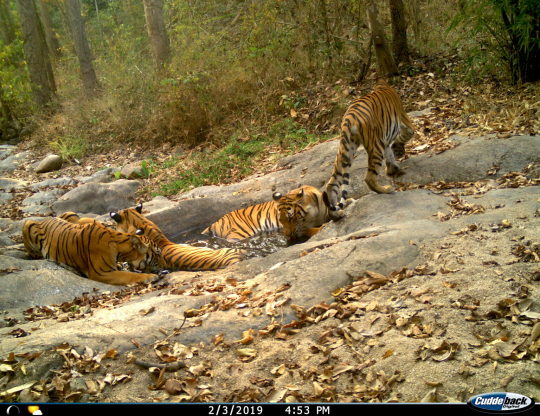Text





Geoffrey Burbidge – Scientist of the Day
Geoffrey Ronald Burbidge, an English/American astronomer and astrophysicist, was born Sep. 24, 1925, in Chipping Norton, Oxfordshire...
learn more
3 notes
·
View notes
Text

"The comet of 1585." A high-school astronomy. 1853.
Internet Archive
228 notes
·
View notes
Photo

Lion’s head rhyton, 1550-1500 B.C.
From Mycenae
99 notes
·
View notes
Photo

‘October' in the ‘Tres Riches Heures’ - probably Jean de Limbourg
41 notes
·
View notes
Text

Tim McKenna Documents the Heaving Waves of French Polynesia
186 notes
·
View notes
Text

Vincent van Gogh (Dutch,
"Garden with flowers", 1888
Oil n canvas, 92 x 73 cm.
Van Gogh Museum
135 notes
·
View notes
Text



We recently acquired one of the world's best private collections of miniature books, and it includes two manuscripts by the 17th century English calligrapher Esther Inglis. This one, which measures 5 cm high, is dedicated to the future Charles I, then a 15-year-old Prince.
2020HEM-17
Houghton Library
79 notes
·
View notes
Text


Two suns with different personalities from volume one of our Blaeu Atlas. One leonine as it sits in the center of a diagram of Copernicus' model, the other pensive as it rises over Tycho Brahe's observatory.
27 notes
·
View notes
Text

Edward Bawden’s linocut of Covent Garden Flower Market, 1967.
671 notes
·
View notes
Text










Illustrations by Firmin Bouisset taken from 'Ce que disent les fleurs' (What the flowers say) by Ludovic Halévy.
Published 1891 by L. Baschet (Paris).
Ville de Paris / Fonds Heure joyeuse.
Bibliothèque nationale de France.
15 notes
·
View notes
Text

Illustrated front cover of 'Birds Every Child Should Know' by Neltje Blanchan.
Published 1907 by Grosset & Dunlap.
Cornell University Library
archive.org
24 notes
·
View notes
Text

Study of Violets (German, late 16th century) by an anonymous artist.
Watercolour on paper.
© The Trustees of the British Museum.
Creative Commons Attribution-NonCommercial-ShareAlike 4.0 International (CC BY-NC-SA 4.0) license.
44 notes
·
View notes
Photo

‘January’ in the ‘Tres Riches Heures’ - Probably Pol Limbourg.
30 notes
·
View notes
Photo

Aryballos in the shape of a hare. Dated to 650-600 BC.
Aryballoi in the shape of animals became popular in Greece in the 7th and 6th centuries BC.
Image from Harvard Art Museums via their online collection: 2002.283
131 notes
·
View notes
Photo

2024 September 24
NGC 6727: The Rampaging Baboon Nebula
Image Credit & Copyright: Alpha Zhang & Ting Yu
Explanation: This dusty region is forming stars. Part of a sprawling molecular cloud complex that resembles, to some, a rampaging baboon, the region is a relatively close by 500 light-years away toward the constellation Corona Australis. That’s about one third the distance of the more famous stellar nursery known as the Orion Nebula. Mixed with bright nebulosities, the brown dust clouds effectively block light from more distant background stars in the Milky Way and obscure from view embedded stars still in the process of formation. The eyes of the dust creature in the featured image are actually blue reflection nebulas cataloged as NGC 6726, 6727, 6729, and IC 4812, while the red mouth glows with light emitted by hydrogen gas. Just to the upper left of the baboon’s head is NGC 6723, a whole globular cluster of stars nearly 30,000 light years in the distance.
∞ Source: apod.nasa.gov/apod/ap240924.html
60 notes
·
View notes
Text
Camera-trapping data revealed in a new study show a steady recovery of tigers in Thailand’s Western Forest Complex over the past two decades.
The tiger recovery has been mirrored by a simultaneous increase in the numbers of the tigers’ prey animals, such as sambar deer and types of wild cattle.
The authors attribute the recovery of the tigers and their prey to long-term efforts to strengthen systematic ranger patrols to control poaching as well as efforts to restore key habitats and water sources.
Experts say the lessons learnt can be applied to support tiger recovery in other parts of Thailand and underscore the importance of the core WEFCOM population as a vital source of tigers repopulating adjacent landscapes.
The tiger population density in a series of protected areas in western Thailand has more than doubled over the past two decades, according to new survey data.
Thailand is the final stronghold of the Indochinese tiger (Panthera tigris corbetti), the subspecies having been extirpated from neighboring Cambodia, Laos and Vietnam over the past decade due to poaching, habitat loss and indiscriminate snaring...
Fewer than 200 tigers are thought to remain in Thailand’s national parks and wildlife sanctuaries, only a handful of which are sufficiently undisturbed and well-protected to preserve breeding tigers.
The most important of these protected areas for tigers is the Huai Kha Khaeng Thung Yai (HKK-TY) UNESCO World Heritage Site, which comprises three distinct reserves out of the 17 that make up Thailand’s Western Forest Complex (WEFCOM). Together, these three reserves — Huai Kha Khaeng Wildlife Sanctuary, Thungyai Naresuan West and Thungyai Naresuan East — account for more than a third of the entire WEFCOM landscape.
Now, a new study published in Global Ecology and Conservation documents a steady recovery of tigers within the HKK-TY reserves since camera trap surveys began in 2007. The most recent year of surveys, which concluded in November 2023, photographed 94 individual tigers, up from 75 individuals in the previous year, and from fewer than 40 in 2007.
Healthy tiger families

The study findings reveal that the tiger population grew on average 4% per year in Hua Kha Khaeng Wildlife Sanctuary, the largest and longest-protected of the reserves, corresponding to an increase in tiger density from 1.3 tigers per 100 square kilometers, to 2.9 tigers/100 km2.
“Tiger recoveries in Southeast Asia are few, and examples such as these highlight that recoveries can be supported outside of South Asia, where most of the good news [about tigers] appears to come from,” said Abishek Harihar, tiger program director for Panthera, the global wildcat conservation organization, who was not involved in the study.
Among the camera trap footage gathered in HKK-TY over the years were encouraging scenes of healthy tiger families, including one instance of a mother tiger and her three grownup cubs lapping water and lounging in a jacuzzi-sized watering hole. The tiger family stayed by the water source for five days during the height of the dry season.
The team of researchers from Thailand’s Department of National Parks, Wildlife and Plant Conservation, the Wildlife Conservation Society, Kasetsart University, and India’s Center for Wildlife Studies deployed camera traps at more than 270 separate locations throughout the HKK-TY reserves, amassing 98,305 days’ worth of camera-trap data over the 19-year study period.
Using software that identifies individual tigers by their unique stripe patterns, they built a reference database of all known tigers frequenting the three reserves. A total of 291 individual tigers older than 1 year were recorded, as well as 67 cubs younger than 1 year [over the course of the study].
Ten of the tigers were photographed in more than one of the reserves, indicating their territories straddled the reserve boundaries. The authors conclude that each of the three reserves has a solid breeding tiger population and that, taken together, the HKK-TY landscape is a vital source of tigers that could potentially repopulate surrounding areas where they’ve been lost. This is supported by cases of known HKK-TY tigers dispersing into neighboring parts of WEFCOM and even across the border into Myanmar.
Conservation efforts pay off
Anak Pattanavibool, study co-author and Thailand country director at the Wildlife Conservation Society, told Mongabay that population models that take into account the full extent of suitable habitat available to tigers within the reserves and the likelihood that some tigers inevitably go undetected by camera surveys indicate there could be up to 140 tigers within the HKK-YT landscape.
Anak told Mongabay the tiger recovery is a clear indication that conservation efforts are starting to pay off. In particular, long-term action to strengthen systematic ranger patrols to control poaching as well as efforts to boost the tigers’ prey populations seem to be working, he said.
“Conservation success takes time. At the beginning we didn’t have much confidence that it would be possible [to recover tiger numbers], but we’ve been patient,” Anak said. For him, the turning point came in 2012, when authorities arrested and — with the aid of tiger stripe recognition software — prosecuted several tiger-poaching gangs operating in Huai Kha Khaeng. “These cases sent a strong message to poaching gangs and they stopped coming to these forests,” he said."
...ranger teams have detected no tiger poaching in the HKK-TY part of WEFCOM since 2013.
-via Mongabay News, July 17, 2024
1K notes
·
View notes
Text

Poisonous, noxious and suspected plants of our fields and woods. 1866. Book cover.
Internet Archive
157 notes
·
View notes